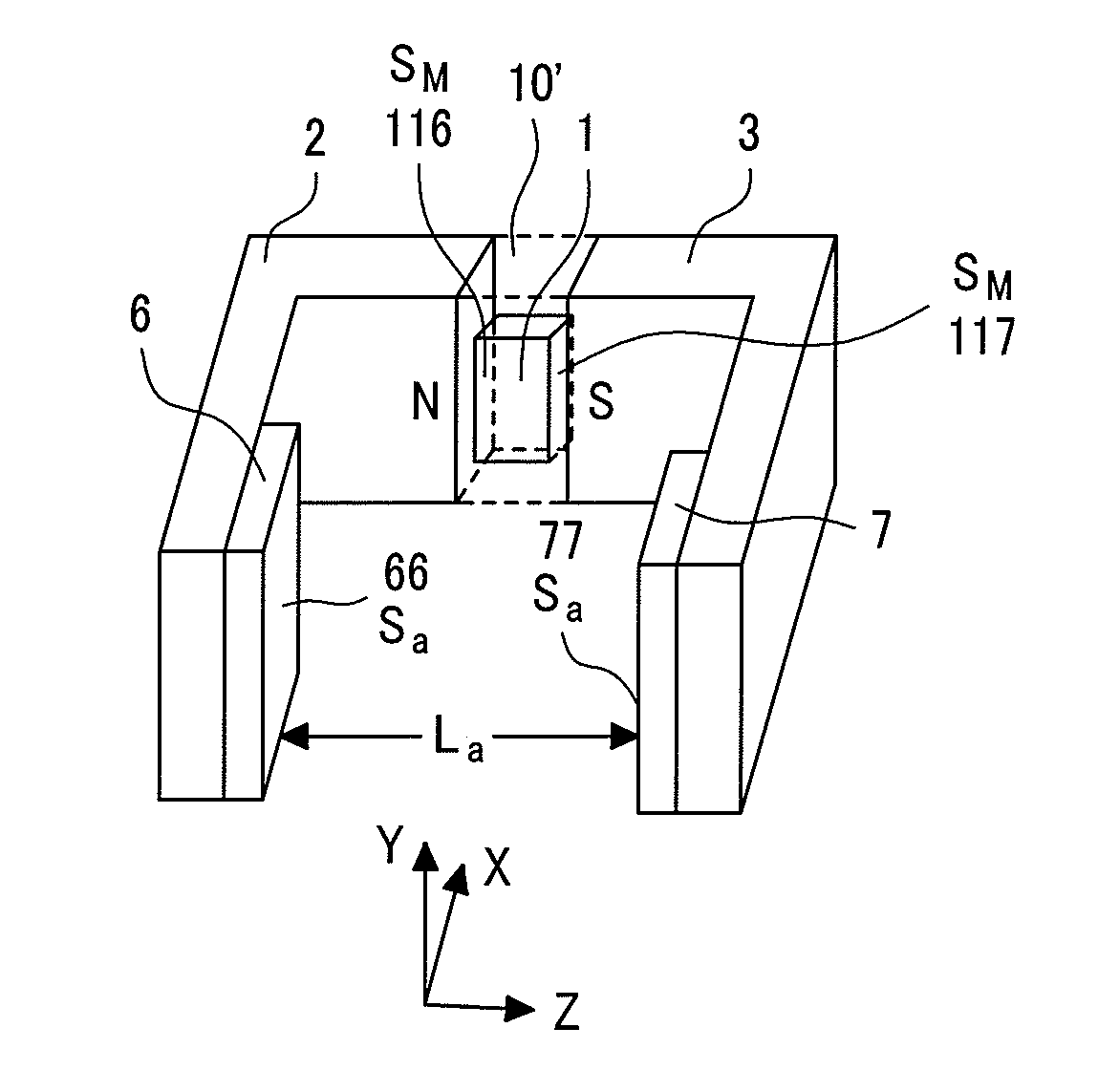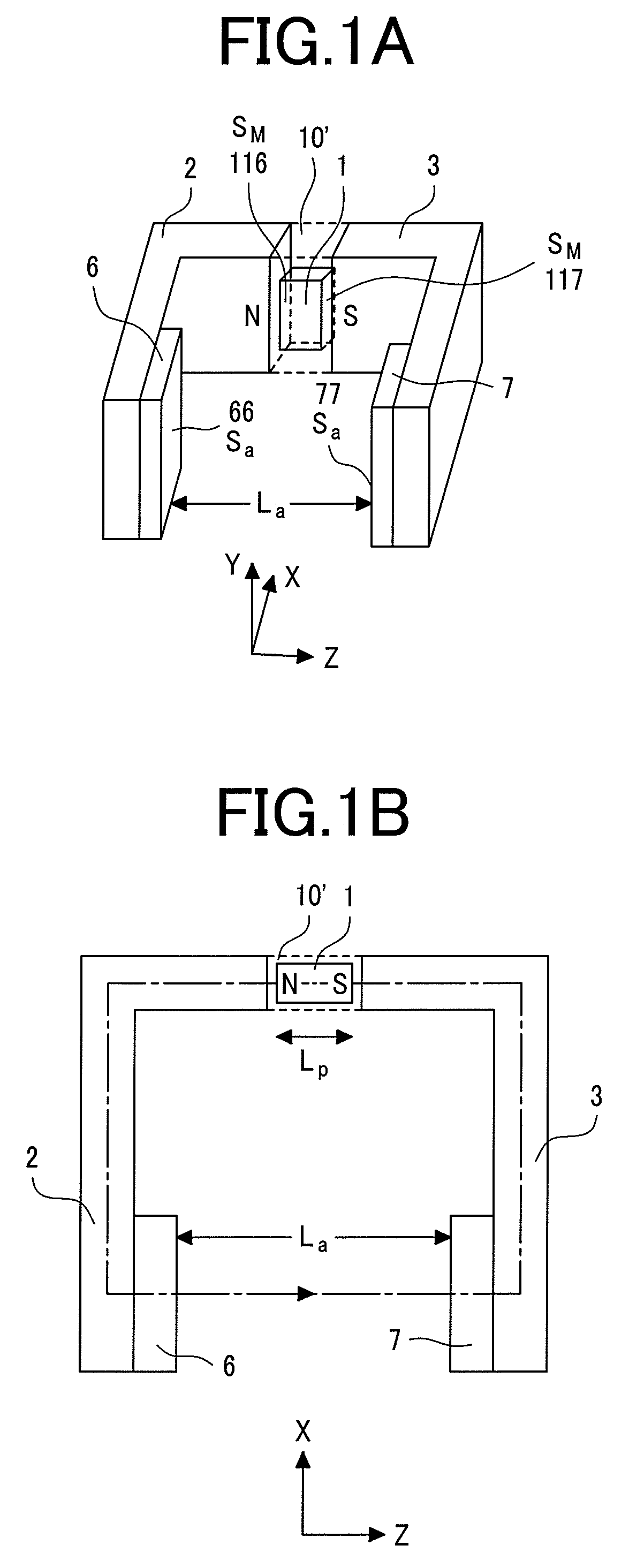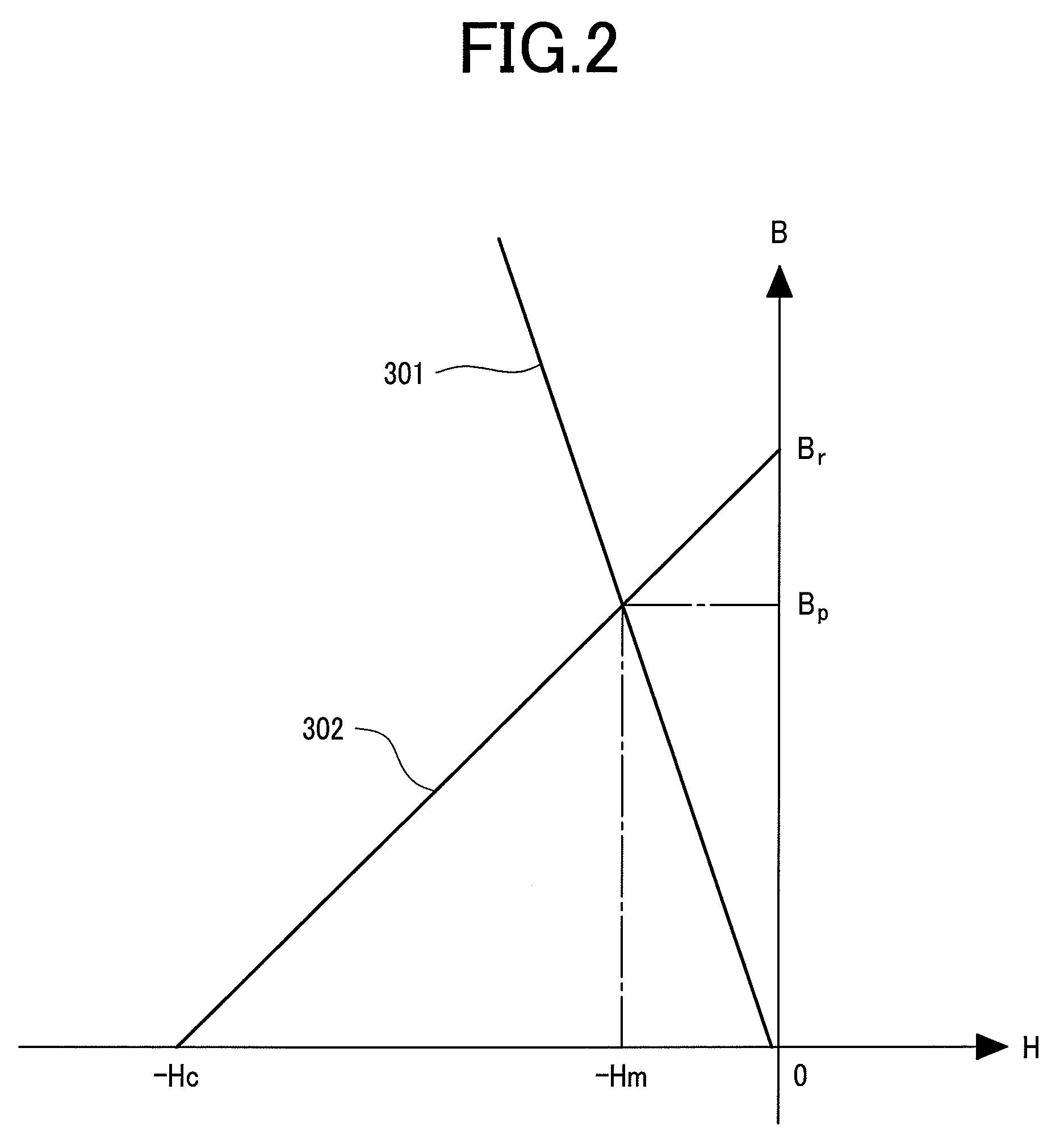Apparatus for electron spin resonance CT
a technology of electron spin resonance and imaging apparatus, which is applied in the direction of electron paramagnetic resonance analysis, magnetic measurement, instruments, etc., can solve the problems of difficult to obtain morphological images, the number of mice used for animal experiments is also remarkable, and the cost of new drug development by pharmaceutical companies is dramatically increasing
- Summary
- Abstract
- Description
- Claims
- Application Information
AI Technical Summary
Benefits of technology
Problems solved by technology
Method used
Image
Examples
first embodiment
[0143]FIG. 7A is a perspective view showing an appearance of a magnet system for 200-MHz ESR-CT for an embodiment which uses the permanent magnet 1 (FIG. 1) of the present invention as a magnetic field generator. The same components as those in FIG. 1 are assigned the same reference numerals. With an actual structure, as is understood from the comparison with FIG. 1, the end faces of the yokes 2 and 3 are semicircle-shaped and the pole pieces 6 and 7 are disc-shaped. Reference numerals 40 and 41 are casters for transporting the magnet. A reference numeral 1′ is a permanent magnet. This magnet is assigned a reference numeral different from that of the permanent magnet 1 which is embedded in the yokes as shown in FIG. 1.
[0144]In the first embodiment, a main static field strength H0 caused by the permanent magnet 1 is about 71.4 G. This time, the magnitude of the measured space L (a region subjected to imaging, such as a mouse) is set to 35 mm. In order to ensure the long-term stabilit...
second embodiment
[0158]Another embodiment having the basic concept of the present invention is shown below. A second embodiment is ESR-CT targeting a rat which is fairly larger than a mouse. For the second embodiment, technical examples regarding 400-MHz ESR-CT including a movable gradient coil system are shown in FIG. 9A, FIG. 9B, and FIG. 10. The main part of the appearance of the permanent magnet system is shown in FIG. 9A, and a magnetic circuit loop on the Y-Z plane taken along a magnetic line passing the permanent magnet system 101′ is shown by a dashed line in FIG. 9B. In FIG. 9A, the magnet of the permanent magnet system is installed on the X-Z plane, and portions which support the yokes 2 and 3 from outside are omitted. FIG. 10 is a sectional view showing coil arrangements of the permanent magnet system in the magnet field, taken at the center of the permanent magnet 101 and viewed along the X axis. Like the first embodiment shown in FIG. 5, the present embodiment includes a stage 551 which...
third embodiment
[0173]Another embodiment of the zoom-in function of the present invention will be explained below as a third embodiment.
[0174]The third embodiment is another embodiment of the second embodiment. The third embodiment uses the same permanent magnet system as the second embodiment and differs therefrom in that the gradient coil system formed between the pole pieces include both a fixed gradient coil system and a movable gradient coil system. FIG. 11 is a sectional view showing coil arrangements corresponding to FIG. 10 of the second embodiment. The present embodiment will be explained below centering on differences from the second embodiment.
[0175]Unlike the second embodiment, the third embodiment is characterized in that it is provided with a pair of fixed gradient field coils 341 and 351 which images mainly the entire measured space and a pair of movable gradient field coils 340 and 350 which is in charge of the zoom-in function and has a small region subjected to imaging and a large...
PUM
 Login to View More
Login to View More Abstract
Description
Claims
Application Information
 Login to View More
Login to View More - R&D
- Intellectual Property
- Life Sciences
- Materials
- Tech Scout
- Unparalleled Data Quality
- Higher Quality Content
- 60% Fewer Hallucinations
Browse by: Latest US Patents, China's latest patents, Technical Efficacy Thesaurus, Application Domain, Technology Topic, Popular Technical Reports.
© 2025 PatSnap. All rights reserved.Legal|Privacy policy|Modern Slavery Act Transparency Statement|Sitemap|About US| Contact US: help@patsnap.com



